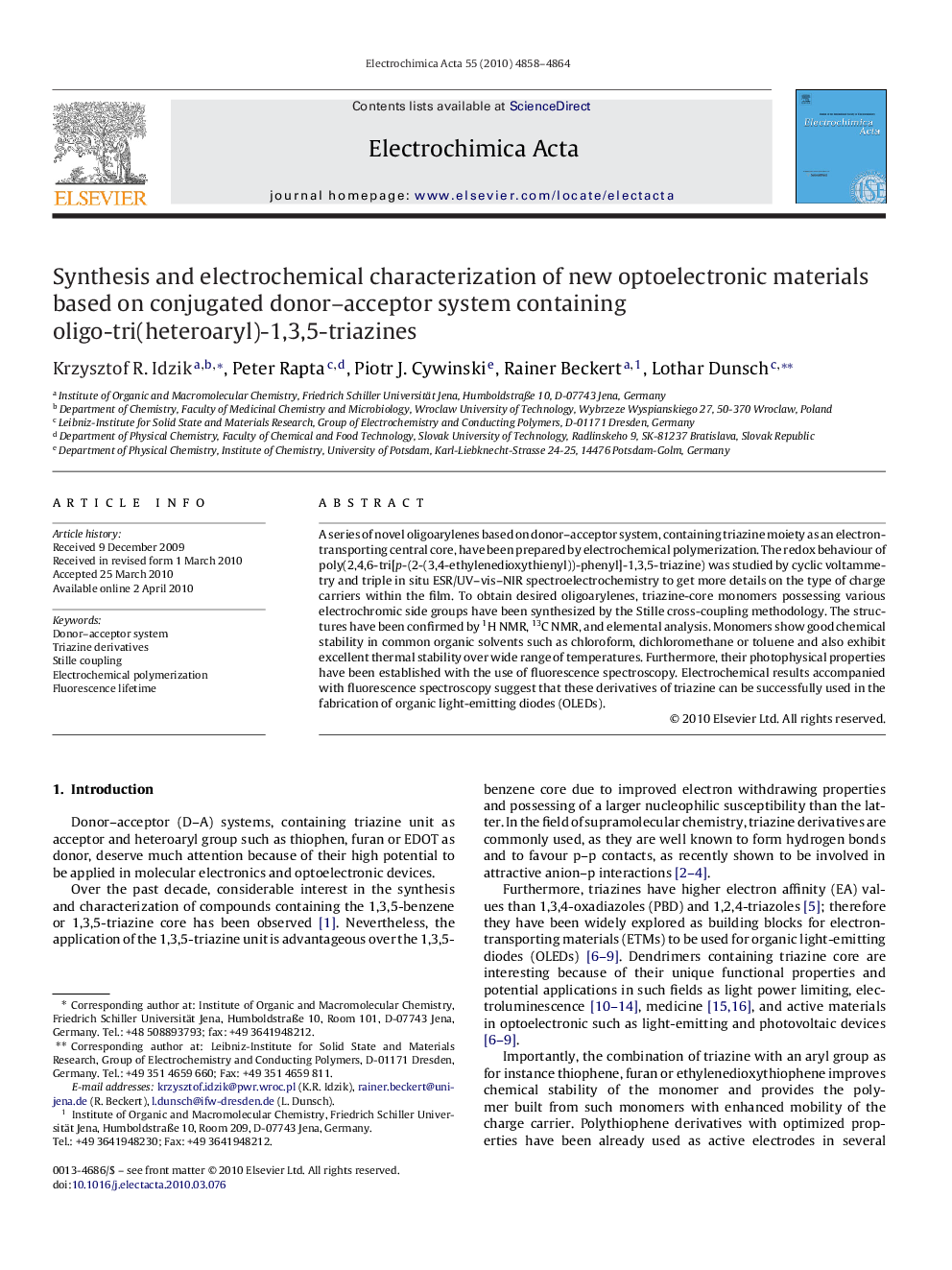| Article ID | Journal | Published Year | Pages | File Type |
|---|---|---|---|---|
| 190555 | Electrochimica Acta | 2010 | 7 Pages |
A series of novel oligoarylenes based on donor–acceptor system, containing triazine moiety as an electron-transporting central core, have been prepared by electrochemical polymerization. The redox behaviour of poly(2,4,6-tri[p-(2-(3,4-ethylenedioxythienyl))-phenyl]-1,3,5-triazine) was studied by cyclic voltammetry and triple in situ ESR/UV–vis–NIR spectroelectrochemistry to get more details on the type of charge carriers within the film. To obtain desired oligoarylenes, triazine-core monomers possessing various electrochromic side groups have been synthesized by the Stille cross-coupling methodology. The structures have been confirmed by 1H NMR, 13C NMR, and elemental analysis. Monomers show good chemical stability in common organic solvents such as chloroform, dichloromethane or toluene and also exhibit excellent thermal stability over wide range of temperatures. Furthermore, their photophysical properties have been established with the use of fluorescence spectroscopy. Electrochemical results accompanied with fluorescence spectroscopy suggest that these derivatives of triazine can be successfully used in the fabrication of organic light-emitting diodes (OLEDs).
